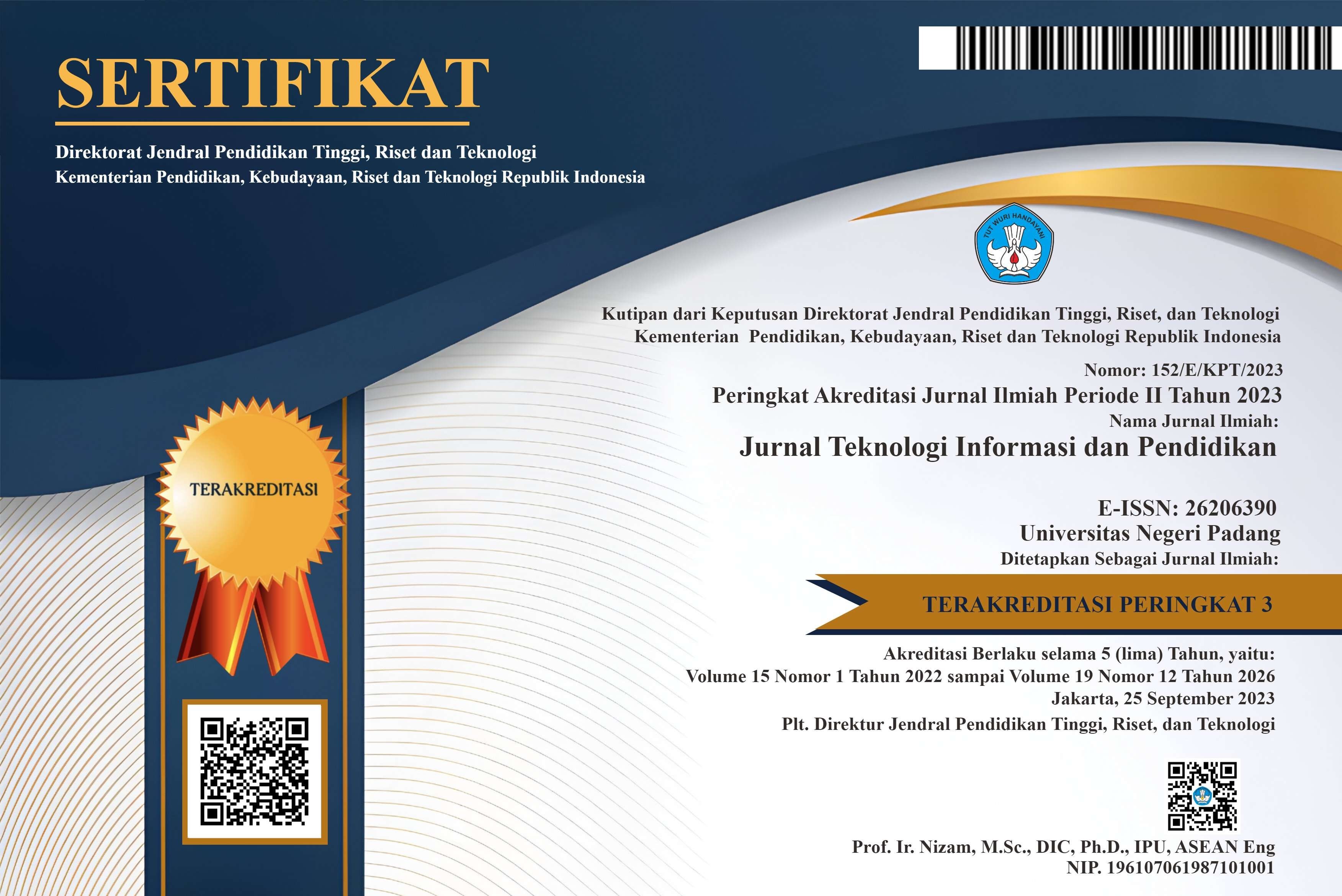Design Smarthome Application with Rapid Application Development (RAD) Method Based on Hybrid Mobile
Abstract
Information technology and computing technology are currently being developed simultaneously to be able to provide information that is processed automatically so as to provide a system that can be used to facilitate human activities. Currently, the smart home is a technology that continues to be improved, such as speed and accuracy in the process inside. This study aims to design a Smart Home application that uses the basic concept of the Internet of Things (IOT) using the Hybrid Mobile-based Rapid application development (RAD) method. The Rapid Application Development (RAD) method focuses on developing an application quickly, precisely and adaptively. By using the RAD method, the smart home application can be applied to Hybrid Mobile where the condition of some electrical equipment in the house can be controlled remotely, namely using a smartphone application or WEB application. From the results of this study the system can monitor and control several electrical equipment at home using the button command feature on mobile and web applications.
References
[2] A. Salim, J. Jefi, B. O. Lubis, J. Atmaja, and F. W. Fibriany, “Penerapan Metode RAD Pada Sistem Informasi Layanan Umroh Di PT. Galang Saudi Tourism Jakarta Berbasis Website,” Bina Insa. Ict J., vol. 8, no. 1, p. 1, 2021, doi: 10.51211/biict.v8i1.1477.
[3] D. Hariyanto, R. Sastra, F. E. Putri, S. Informasi, K. Kota Bogor, and T. Komputer, “Implementasi Metode Rapid Application Development Pada Sistem Informasi Perpustakaan,” J. JUPITER, vol. 13, no. 1, pp. 110–117, 2021.
[4] H. Setiawan, A. Sofwan, and Y. Christyono, “Perancangan Aplikasi Smart Home Berbasis Android Untuk Pengendalian Keamanan Rumah Dengan Menggunakan Android Studio,” Transient, vol. 6, no. 3, p. 503, 2017, doi: 10.14710/transient.6.3.503-513.
[5] F. G. Aditya, A. G. Permana, U. Telkom, U. Telkom, and C. G. Interface, “ANALISIS DAN PERANCANGAN PROTOTYPE SMART HOME DENGAN SISTEM CLIENT SERVER BERBASIS PLATFORM ANDROID MELALUI KOMUNIKASI WIRELESS ANALYSIS AND DESIGN OF PROTOTYPE SMART HOME WITH CLIENT SERVER SYSTEM BASED ANDROID PLATRFORM THROUGH WIRELESS,” 2015.
[6] T. A. Zuraiyah, M. I. Suriansyah, and A. P. Akbar, “Smart Urban Farming Berbasis Internet Of Things ( IoT ),” Inf. Manag. Educ. Prof., vol. 3, no. 2, pp. 139–150, 2019.
[7] E. Mardison, “the Opportunity To Access Better Information Technology,” J. Teknol. Inf. dan Pendidik., vol. 14, no. 1, pp. 33–39, 2021, doi: 10.24036/tip.v14i1.406.
[8] B. R. U. Putri, I. W. A. Arimbawa, and F. Bimantoro, “Sistem Presensi Siswa Berbasis Internet of Things Menggunakan Sensor Sidik Jari Pada SMK PERHOTELAN 45 MATARAM ( Student Attendance System Using Fingerprint Sensor on the SMK Perhotelan 45 Mataram Based on Internet of Things ),” Jtika, vol. 1, no. 2, pp. 224–232, 2019.
[9] A. B. Pulungan, M. Oktavianda, H. Hastuti, and H. Hamdani, “PARKING INFORMATION SYSTEM BASE ON INTERNET OF THINGS (IoT),” J. Teknol. Inf. dan Pendidik., vol. 13, no. 2, pp. 69–75, 2020, doi: 10.24036/tip.v13i2.352.
[10] A. Khandeparkar, R. Gupta, and B. S. B.Sindhya, “An Introduction to Hybrid Platform Mobile Application Development,” Int. J. Comput. Appl., vol. 118, no. 15, pp. 31–33, 2015, doi: 10.5120/20824-3463.
[11] K. Khoirudin, A. F. Daru, and A. Nugroho, “Hybrid Mobile Application Dengan Metode Service Oriented Architecture,” J. Inform. Upgris, vol. 5, no. 1, 2019, doi: 10.26877/jiu.v5i1.2900.
[12] B. Dunka, E. A. Emmanuel, and D. O. Oyeyinka, “Hybrid mobile application based on ionic framework technologies,” Int. J. Recent Adv. Multidiscip. Res., vol. 04, no. 12, pp. 3121–3130, 2017, [Online]. Available: https://www.researchgate.net/publication/322397904
[13] Subianto, “Penerapan Metode Rapid Application Development dalam Perancangan Sistem Informasi Pendataan,” J. Infokam, vol. 16, no. 1, pp. 46–54, 2020, [Online]. Available: http://amikjtc.com/jurnal/index.php/jurnal/article/view/218/164#
[14] A. C. Nugroho, “Sistem Presensi Online Berdasarkan Metode Rapid Application Development Menggunakan Block Programming,” J. Appl. Comput. Sci. Technol., vol. 2, no. 1, pp. 1–6, 2021, doi: 10.52158/jacost.v2i1.107.
[15] N. Agustinus, “Studi Analisis Rapid Aplication Development Sebagai Salah Satu Alternatif Metode Pengembangan Perangkat Lunak,” J. Inform., vol. 3, no. 2, pp. 64–68, 2002.
Copyright (c) 2023 Jurnal Teknologi Informasi dan Pendidikan

This work is licensed under a Creative Commons Attribution-ShareAlike 4.0 International License.















.png)














